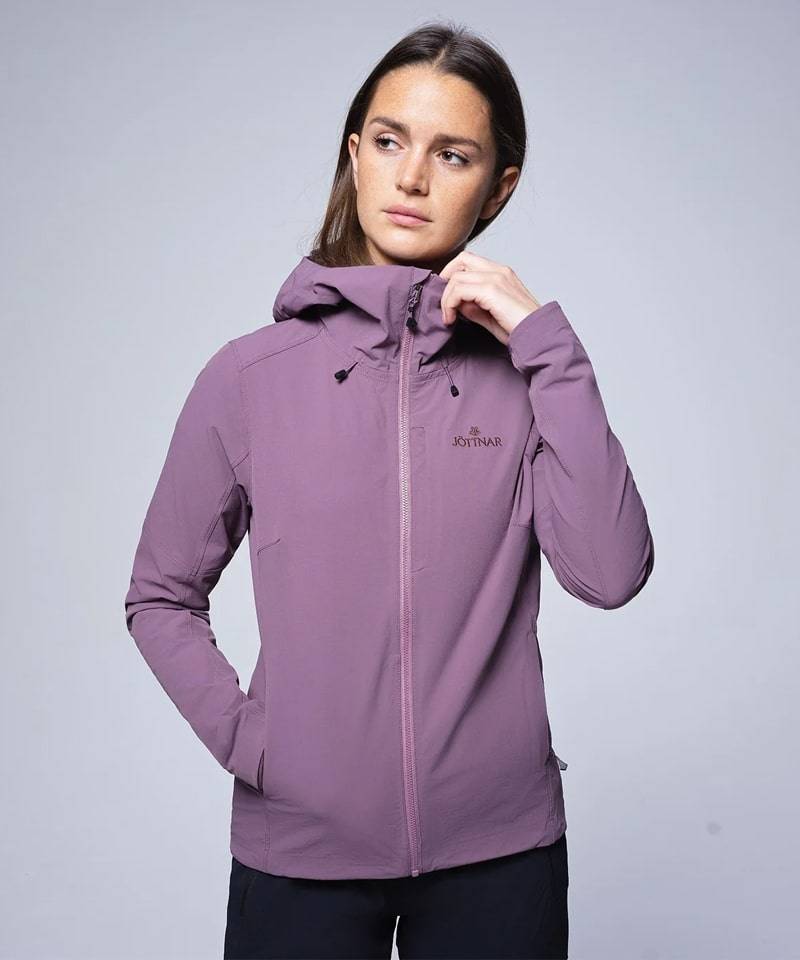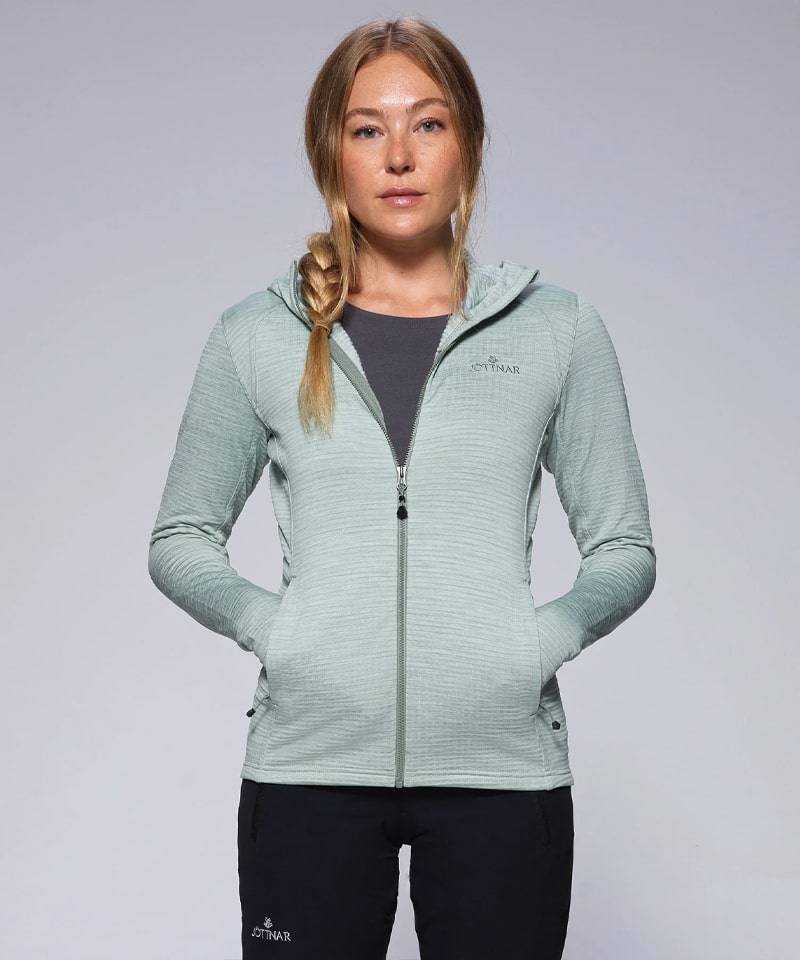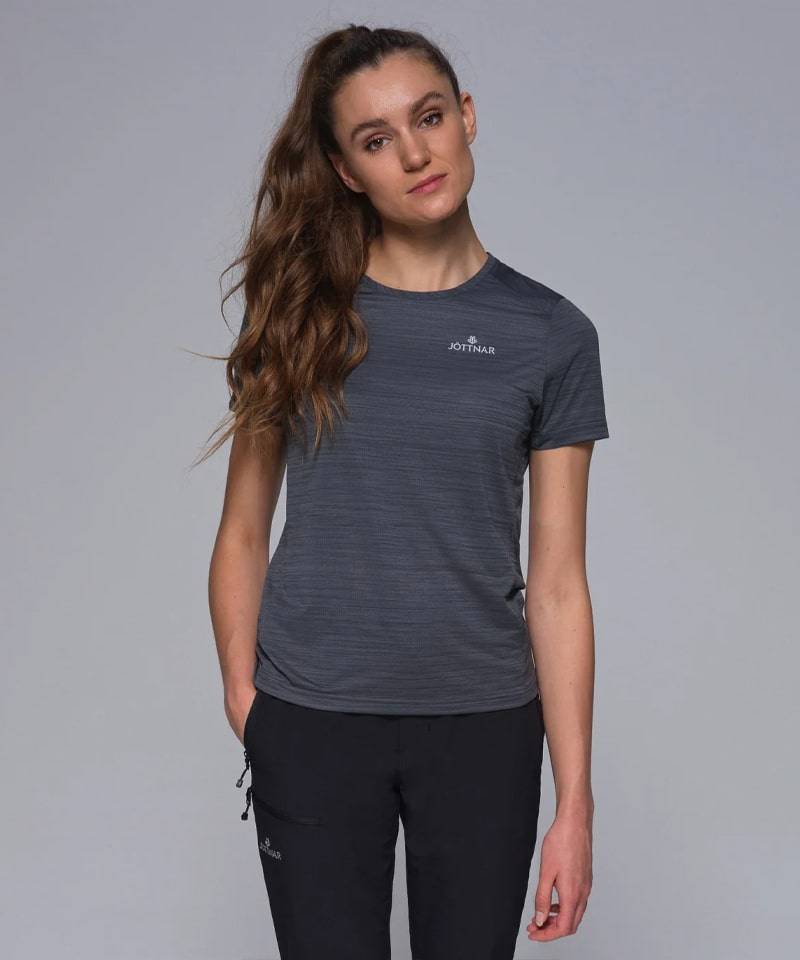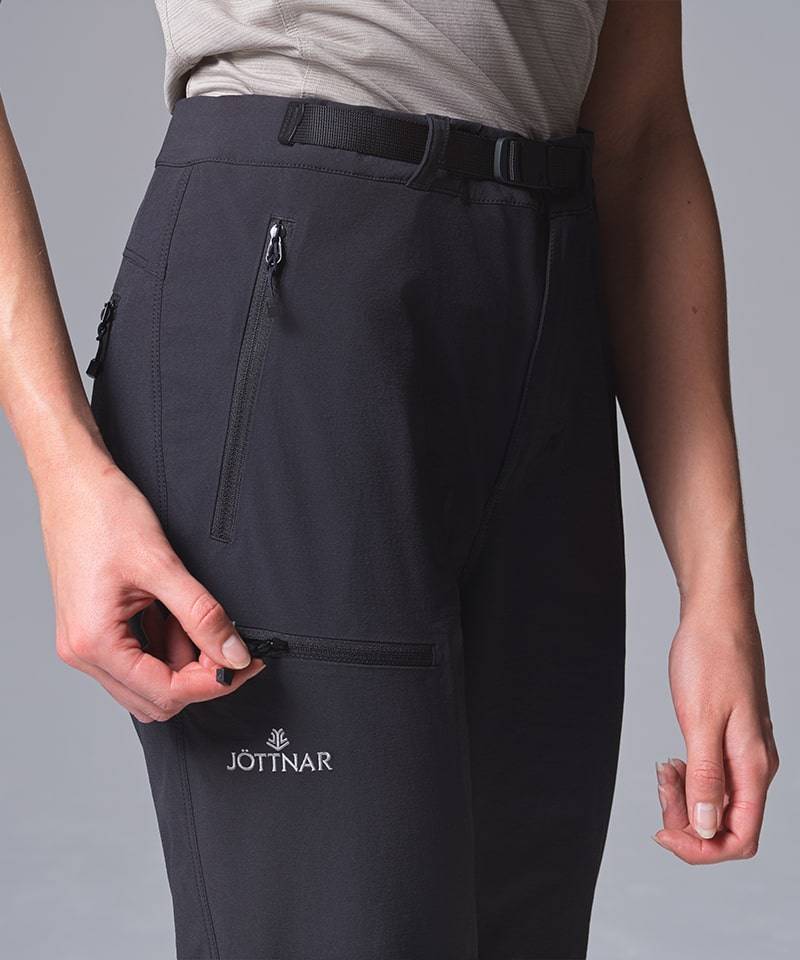


An Interview with Ewa Kalisiewicz
Mountaineer, BASE jumper, Jöttnar Pro Team member.
Ewa Kalisiewicz is the newest member of the Jöttnar Pro Team. As an aviation industry professional Monday to Friday and a mountaineer and wingsuit BASE go-getter on weekends, she’s travelled the world in pursuit of adventure.
We caught up with her at her Geneva home and talked mountains, training, mindset, gear and about one overly close encounter with a crevasse.
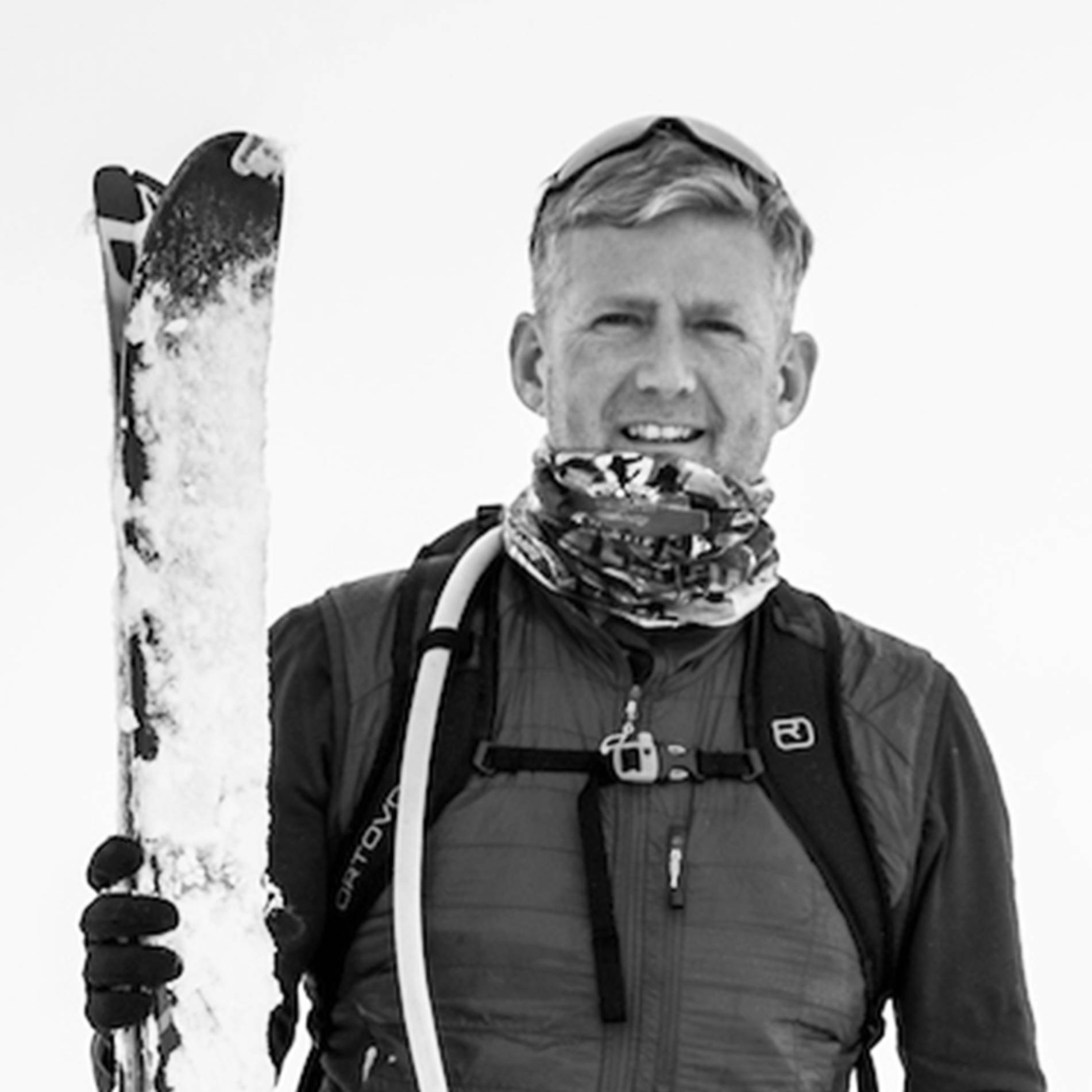

An Interview with Ewa Kalisiewicz
Mountaineer, BASE jumper, Jöttnar Pro Team member.
Ewa Kalisiewicz is the newest member of the Jöttnar Pro Team. As an aviation industry professional Monday to Friday and a mountaineer and wingsuit BASE go-getter on weekends, she’s travelled the world in pursuit of adventure.
We caught up with her at her Geneva home and talked mountains, training, mindset, gear and about one overly close encounter with a crevasse.

You’re an aviation industry professional as well as a wingsuit BASE jumper. This passion for flying.
Where does it come from?
Ewa: I chose to study aviation management at university, which I thought would be sufficiently interesting to pursue academically for the five years that followed. Dreams and passion for flying may be one of the biggest clichés there are, but for me it was a pragmatic choice of something interesting to study. And of course, my own “flying” came into reality with skydiving initially, which I considered the purest form of human flight, learning to fly my own body in the air streams as opposed to being separated from them by an aircraft. That sensation only accelerated when I started flying a wingsuit, either in a skydiving environment or in the mountains, and was something that gave me joy that couldn’t be replaced with anything else.
Tell us more about your line of work, and how you juggle this with trips and expeditions.
Having completed my studies, I was recruited by the International Air Transport Association (IATA), and I’m happy and proud to be contributing to the industry’s improvements in its financial sector. Some may consider that a full-time job, a typical 9am-6pm office position, brings limitations as to what can be accomplished outside of the long working hours. While I wouldn’t mind a longer annual leave allowance, I also recognize that a “regular” job provides a schedule, a routine, a frame to which I can fit my other activities. And perhaps the limited time I have motivates me even more to make most of it: training after work on weekdays, spending all of the weekends outdoors and replacing vacations by trips and expeditions. Normally, every single day off work is well planned and accounted for, resulting in two or three trips and expeditions per year and some extended weekends for long alpine routes. The time off work is too precious and I always allocate it carefully, mostly for outdoor activities. I’ve also learned that a written list of objectives is as necessary in professional life as it is for climbing! Such simple visualisation of the routes or summits I’d want to accomplish in the coming season keeps me in check and on schedule – the only variable to assess is the weather and conditions for a particular climb. There’s so much emphasis these days on a healthy work-life balance. In my case, I truly feel they’re powering one another: the outdoor challenges empower me for the professional projects, and hardship of the mountains leaves me rested like no other place.



Mountaineering is well known for its danger, discomfort, frequent monotony, and moments of terror.
Is there anything to love?
It certainly is all of those things… When drenched in rain, caught in a blizzard, cold and uncomfortable, I just remind myself those are temporary and only contributing to the climb being more memorable. And when finally popping on the summit it feels so well deserved. As for moments of terror, luckily there haven’t been too many. Danger can be managed to a certain degree, by being prepared and well trained, making the right decisions. I think mountaineering provides a great deal of character-honing, along with an incredible sense of freedom. It also shows the power of decisions and their consequences, the simple joy of often remote routes and places, being surrounded by gorgeous nature and feeling truly in the moment. Nothing before and after exists.


Alpinism, skiing and BASE wingsuiting are hugely technical activities demanding long apprenticeships, and with high consequences when things go wrong.
What can you describe of the particular mindset required to progress and excel in all three?
I’d say the key is to stay humble while always striving for more practice and experience. There are too many accidents caused by complacency. Before doing anything, let alone practicing “risky” activities, I like to ask myself why am I doing this and for what reasons? Not to show off or boost the ego. The aspect of making informed decisions for the right reasons seems obvious yet is not always followed.
Having said that, I have to reflect on my own decisions, some of which have not always been right. Last winter, a group of three of us - me, my husband Tim and a friend - set off ski touring for the summit of one of the 4,000m peaks in the Alps. As we were making our way up the glacier and singing “Beautiful Day” by U2, enjoying glorious sunshine, I felt a quick rumble of the ground beneath my skis and started falling down a 25m-deep crevasse, seeing the guy in front of me falling metres before me, too. It turned out that despite a correct heading and lack of any visual signs indicating the danger, we’d been moving on top of the length of the crevasse and the whole snow bridge collapsed, sending the two of us down. I suddenly found myself many metres below the surface, my twisted body wedged in a glacial ice pocket, stuck further with all the snow and ice that came down with me. Only my head was sticking out slightly and so I managed to shake off the snow from my face in order to breathe. The rest of my body was totally stuck and unusable. For the first time, and hopefully last, it crossed my mind that this may actually be game over. Especially seeing the other friend falling as well, silence in the crevasse and being unsure if Tim was in the same predicament. Fear of dying aside, the worst was the feeling of total helplessness – having all the equipment - phone, SOS beacon - yet being unable to use them; trying to free myself even a tiny bit, unsuccessfully. Luckily, Tim was un-impacted and still on the top, able to call for help and having tried, yet then dismissed, the option of coming down to help us himself.
"I suddenly found myself many metres below the surface, my twisted body wedged in a glacial ice pocket."
There were some aspects of this accident that I’d call unfortunate, but I would not say it was “bad luck”. I’m not sure if such thing even exists – they are choices, actions and consequences. Which brings me back to the decision-making aspect, which is much easier to assess in retrospect: I had dismissed the fact that we were alone on the mountain, despite beautiful weather; the snow conditions that winter were not great and it could have been assumed the crevasses were not well covered and finally, we did not keep the sufficient spacing between us. We were also not roped up, which we concluded may have actually worked in our favour, otherwise it’s likely all three of us would have been stuck at the bottom of the crevasse.
Thinking about the whole horror story, I was somehow surprised with my overall reaction: I didn’t cry or shout, other than establishing contact with others. I did my best to improve my condition without panic or irrational behaviours. I’m not sure that the “calm mind” and its expression is something that can be trained, but I’m glad I was not consumed by shock and fear. Being dug out by a rescue team member with a shovel, I greeted him with a million thanks for coming for me, and asking if it would be possible not to cut my rucksack off me and also rescue my skis that had fallen even further. The bag was cut to pieces and I needed to buy new skis!



What does your risk assessment process look like from a BASE and wingsuit perspective?
Give an example of an occasion when you decided not to commit.
BASE jumpers often and rightly say, “if there’s a doubt, there’s no doubt” – meaning it there’s anything that makes you uncertain or uncomfortable before the jump, best turn around. I often look back at my first years of BASE jumping and wingsuit flying in the mountains: I never was too much of a risk-taker or recklessly left things to chance, yet the whole experience was so exciting and irresistible that there was less consideration for when things may go wrong. Also, a better understanding of what it is that that can go wrong only comes with experience. So naturally the more experienced I’ve become, the more inclined I am to think thoroughly about every aspect of a jump.
A standard risk assessment process would consider things from equipment check, through the considerations for the technicalities of a jump, for example the exit, the flight, the landing, to weather conditions and how all of these could be mitigated.
There have been a number of times where I’ve decided not to commit and, in such instances, I would not even go to this particular jump. Because I’ve assessed the jump being too technical and demanding for what I feel comfortable with, or the terrain demanded a very good flight performance to reach the only and distant landing area. On some other occasions, I’ve stepped back from an exit point and hiked back down on foot simply because I felt hesitant and was lacking confidence at that instance.
Wingsuiting used to be my prime activity, done wholeheartedly for years via skydiving and BASE. It was giving me pleasure and a sense of accomplishment that I thought could not be replaced with anything else. But over time I started realizing that my passion for it had gradually faded and that I was jumping mainly out of habit. There was no accident or any dramatic event, I just concluded that it didn’t give me what it used to, so now I’m focusing on climbing more, stepping away from wingsuiting. One should never be persuaded or talked into BASE jumping – either you do it for yourself because it gives you joy, otherwise it’s pointless.



This all sounds like the opposite of the reckless thrill-seeking adrenaline junkie that BASE jumpers are often portrayed as.
Where does this stereotype come from?
From the general public’s perspective, I actually understand why BASE jumping can have such bad fame. For starters, the media paint the picture of sensationalism – all the depicted attention-grabbing headlines of injuries and fatalities that enforce the idea that it's a reckless and pointless activity, not much more than a death wish. Also, BASE jumpers themselves naturally tend to share the content they’re most proud of, often featuring elaborate stunts, or flights with a very close proximity to the ground. And people who are not close to the sport, obviously don’t know or realise how much dedication, practice and experience it actually takes to perform like that. BASE jumping relies on highly calculated risk and complex assessments, carried out by athletes that have performed thousands of jumps, for long years in the sport, and intend to keep it sustainable for years to come.
"When the stakes are this high and it's just you two at the table, there is no room for pretence."
Tim Howell and Ewa Kalisiewicz are husband-and-wife alpinists, climbers, skiers and BASE jumpers. A partnership built in the cold forge of alpine nights and first lights.
A story of trust, honesty, resilience and fellowship.
You’ve climbed and jumped all over the world.
Do you have a standout memory of any particular trip or moment?
Too many! Just to name a few, I always look back with great sentiment at the remoteness and self-sufficient aspect of our expeditions. The most memorable ones were summiting never-climbed-before 5,000m peaks in Kyrgyzstan, climbing Kilimanjaro and Aconcagua via rarely ascended lines and doing so completely unsupported. It’s great that porter services exist on some of these peaks and so people can choose to do them with more ease, yet we usually opt to make them harder for ourselves. It’s not only the aspect of carrying everything we need, but also not relying on the camp being set up and waiting when we arrive. Water still needs to be sourced, food needs to be cooked…
Do you do much in the way of training, or do you just allow regular time in the mountains to take care of that naturally?
Ha, I wish! Ten hours each day working or commuting means I don’t spend enough time in the mountains for it to take care of my fitness naturally. I also don’t specifically train for an upcoming trip or expedition, rather I try to be fit and remain this way throughout the year, as opposed to working against a deadline of an upcoming trip. The overall fitness should have been built over months, if not years, of regular and consistent training. My training is not very elaborate and contains of basics: long hikes and runs for cardio, and weight training to strengthen and retain the muscle. And of course, long hours on the hills at the weekends and during trips.


What are your never-without favourite pieces of clothing when in the mountains?
The Fenrir down jacket is my absolute must-have. Warm, comfortable and packs really small, so there’s always space for it. You never know how the alpine weather will turn and I won’t risk being cold on a long climb.
The Odin shell jacket is my perfect outer layer, protecting well from wind and rain. Thin, light yet robust and reliable, even in a heavy downpour. I love the huge double chest pockets that are perfect for the essentials I want on hand: phone, sunscreen, gloves, sunglasses… The little sleeve pocket is an additional bonus – perfect for the ski pass or gondola ticket, ready to tap without searching for it.


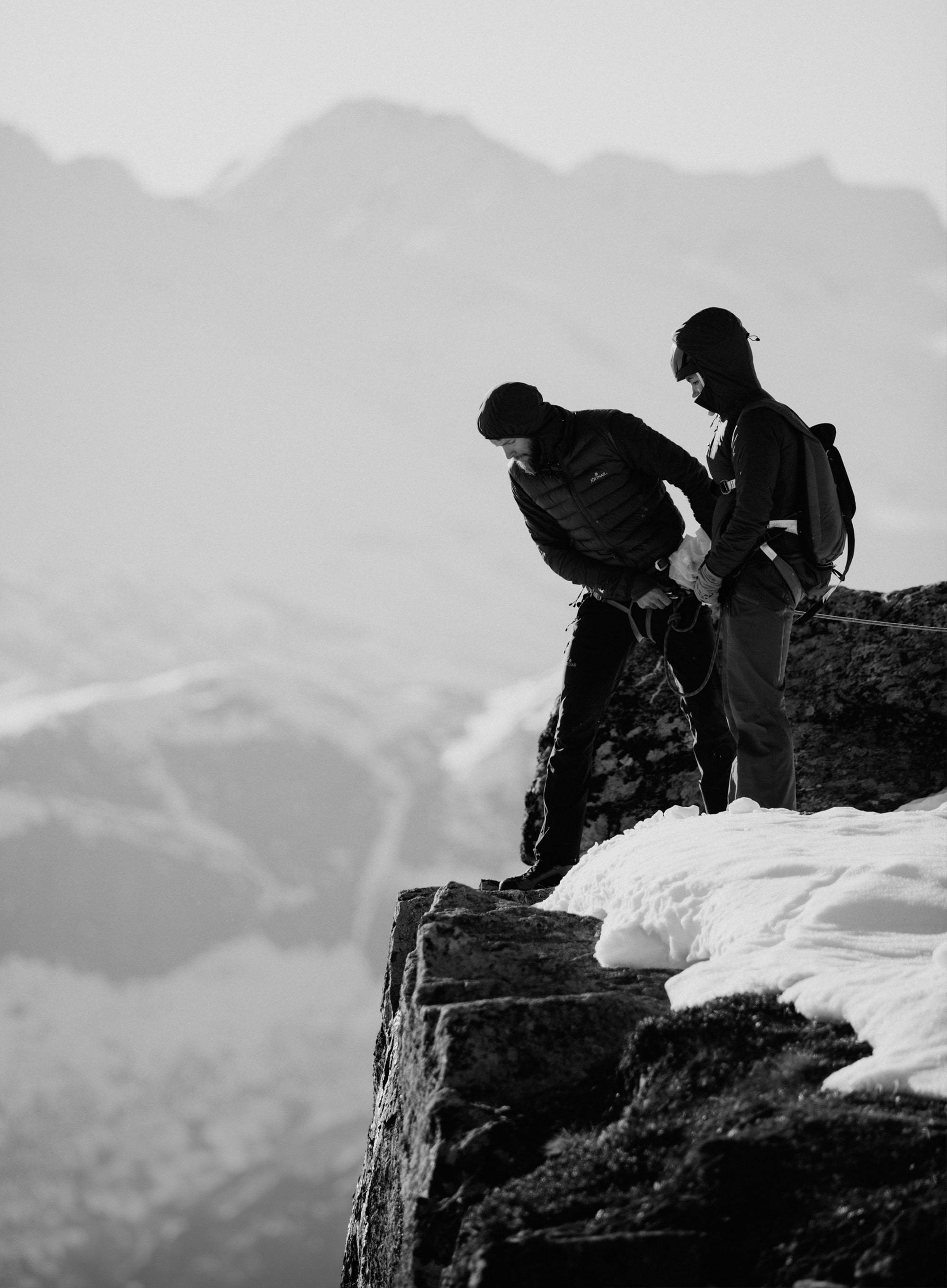
You and your husband, Tim, are often described as a ‘power couple’ within the BASE and exped world.
What have you learned from one another?
It just makes me smile, not to say laugh, hearing us described that way. I believe our power comes from the alignment on how to live life and spend time, with no need to compromise.
I met Tim at a skydiving centre. He arrived to improve his wingsuit flying, and I was working as a wingsuit coach. He’d say I helped him improve his wingsuiting skills. It may have been true back then, nine years ago!
Our joint mountain outing started in context of wingsuit BASE, and evolved around scrambling the mountains to reach an exit point – with no climbing or equipment needed. As a passionate climber himself, he was the one to introduce me to his world of climbing and mountaineering. I owe him not only the passion for these, but also the knowledge and skills I have myself now. He constantly encourages me to trust me abilities, motivates me to try harder, learn, improve… His everlasting energy is contagious and never-ending supply of ideas for a next trip very motivating. And not to mention all the “good” and “bad” drills he took from the military and engraved on me!

Ewa Kalisiewicz is a member of the Jöttnar Pro Team. Read more here.

